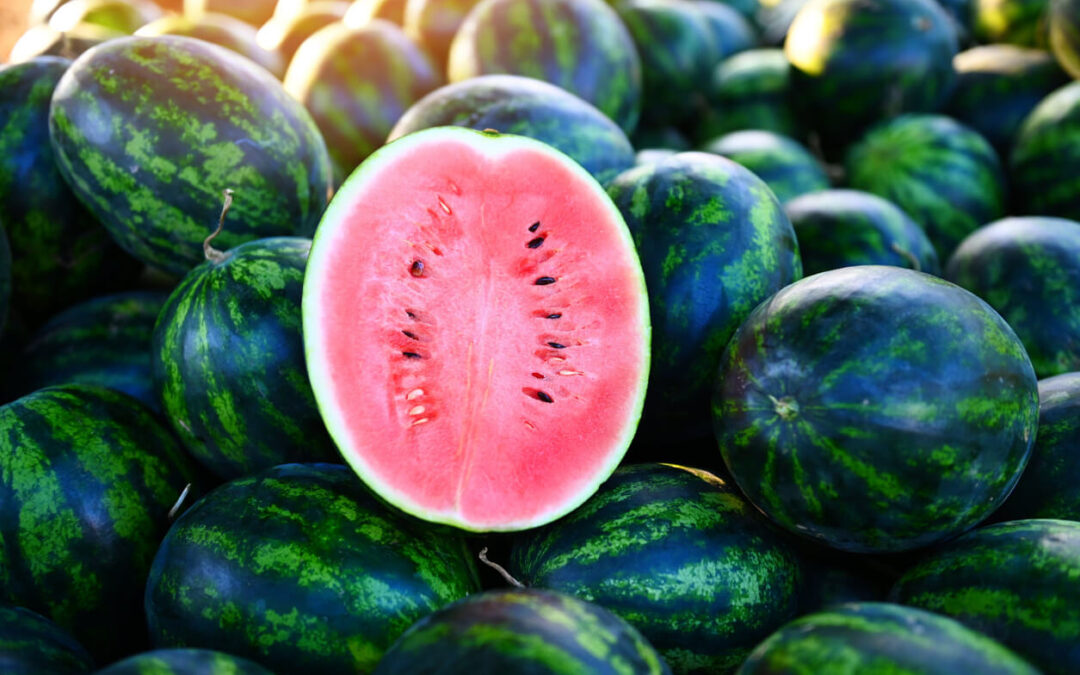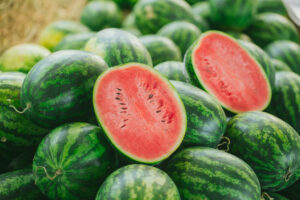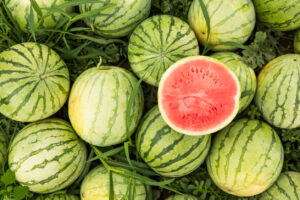When Is Watermelon Season and Why Does Timing Matter for Wholesalers?
Watermelon season typically runs from May through September, with peak flavour and ripeness occurring during July and August. During this period, fruit from regions such as Florida, Georgia, and the Mediterranean offers superior sweetness and texture.
For businesses specialising in wholesale fresh produce, this seasonal window is critical. Stocking watermelons during peak harvest ensures not only better taste and appearance but also improved shelf life and reduced waste. Timing procurement correctly allows fruit wholesalers to meet consumer expectations and avoid costly shrinkage.
Sourcing the Best Wholesale Fresh Watermelon
Watermelons grow well in a variety of climates, from southern Europe and North Africa to U.S. states like Indiana and Georgia. While watermelons are available year-round, the flavour and value are unmatched during the summer peak.
Suppliers such as CM Watermelons utilise a network of local and international growers to maintain freshness and consistency. Their long-standing relationships with growers and logistics partners help ensure high quality across shipments. Returning clients frequently cite improved handling, minimal spoilage, and better flavour as key reasons for choosing trusted wholesale partners.
Consistent quality starts at the source. Partnering with experienced suppliers means fewer downstream issues for your wholesale fresh produce operation.
How to Pick and Store Watermelon for Wholesale
- Look for creamy yellow ground spots as this indicates ripeness.
- Choose dull-skinned melons with firm, symmetrical shape, and try to avoid the overly shiny or soft melons.
- Opt for heavier fruits and listen for a hollow sound: A dense, hollow-sounding melon is often ripe.
These visual and physical indicators can help wholesale buyers quickly assess quality on arrival.
Storage guidelines:
- Whole watermelons can be stored at room temperature (10–15 °C) for up to 10 days.
- Watermelons that have been cut must be refrigerated and ideally consumed within 4 days.
- High humidity and proper air circulation are vital to prevent spoilage.
Handling high volumes of watermelons or transporting them with a few degrees in temperature variance can affect an entire pallet. CM Watermelons integrates climate-monitored bins and cold chain tracking to reduce spoilage and preserve shelf life.
Adding Value with Watermelon in Wholesale Fresh Produce
Seasonal focus:
- Concentrate sales between May and September.
- Leverage key occasions like school holidays and summer events.
Variety matters:
- Offer a range including seedless, yellow-flesh, and mini melons to serve diverse market demands.
Fresh-cut and merchandising ideas:
- Pre-cut melon cubes or sticks perform well in retail and catering.
- Juice bars, cafés, and caterers can integrate watermelon into smoothies, salads, or desserts.
- Summer promotions featuring recipes or sampling can increase basket value.
CM Watermelons supports retailers, event suppliers, and foodservice operators with flexible volumes, including bin, crate, and custom pallet loads.
Key Considerations Before Placing a Wholesale Order
Wholesale buyers should evaluate the following before ordering large volumes of watermelon:
- Ripeness stage at dispatch: Slightly underripe melons have longer transit life. Discuss harvest timing with your supplier.
- Seedless vs seeded: While seedless dominates consumer retail, seeded melons are gaining popularity in foodservice.
- Packaging and size: Choose from various load formats tailored to retail, catering, or processing operations.
- Market pricing trends: Peak-season purchases generally yield stronger margins, but supply tightens in late summer, therefore booking early is advised.
Suppliers like CM Watermelons offer support across the procurement lifecycle, helping fruit wholesalers streamline ordering and delivery with fewer surprises along the way.
Popular Watermelon Use Cases That Boost Sales
Understanding how end-users apply watermelon can help wholesalers upsell to different buyer segments:
- Restaurants: Use grilled watermelon in savoury salads
- Juice bars: Create hydration-focused smoothies
- Retailers: Drive sales with recipe cards or sample trays
- Event caterers: Carve melons into centrepieces or summer platters
Protecting Watermelon Quality During Storage & Transport
Even the best melon will disappoint if improperly stored. Key practices include:
- Keep consistent temperatures (10–15 °C) and avoid rapid temperature changes
- Don’t stack melons excessively as excess weight can bruise fruit
- Follow FIFO (First-In, First-Out) to maintain freshness
- Use ventilated bins to maintain airflow
Over stacking remains one of the top causes of in-transit damage. That’s why CM Watermelons trains staff and provides clear handling guidance to reduce spoilage and protect margins for wholesale buyers.
Top Tips to Maximise Watermelon Season
- Book early – peak season supply moves fast
- Train staff on ripeness checks – better sorting reduces returns
- Promote seasonal recipes – drive higher sales per unit
- Store at correct temperatures – extend shelf life and quality
Start Your Summer Strong with CM Watermelons
Sourcing high-quality wholesale fresh produce during watermelon season starts with the right partner. CM Watermelons brings decades of field and logistics experience to ensure premium product from harvest to delivery.
Get in touch today to plan your seasonal supply, review varieties, and secure consistent quality for your customers.
FAQ for Wholesale Buyers
Can you supply watermelons outside of the UK season?
Yes. We import from Morocco and Spain to bridge gaps from October to April.
Do you offer pre-cut watermelon options?
We work with partners who can process melons into foodservice-ready formats.
What’s the shelf life for bin-packed vs crate-packed fruit?
With correct cold chain handling, both can last 10–21 days depending on ripeness.


